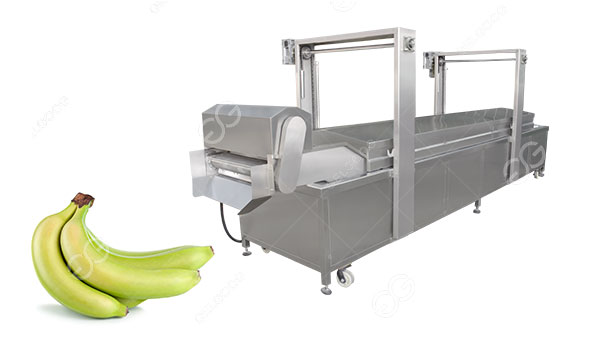Blanching is a common heat treatment process in fruit and vegetable processing. Its main purpose is to achieve the effects of enzyme inactivation, color preservation, softening and sterilization through short-term heating, while laying the foundation for subsequent processing (such as freezing and drying). The temperature and time of blanching play a key role in the quality of the final product. What temperature is required for blanching?

1.Blanching Temperature Range
Generally speaking, the blanching temperature of fruits and vegetables varies according to the type and purpose of treatment. The commonly used blanching temperature range is 70°C to 100°C. The specific temperature requirements are as follows:
Low-temperature blanching (70°C ~ 85°C)
Low-temperature blanching is mainly suitable for fruits and vegetables with a crisp texture, such as strawberries and cucumbers. This temperature condition can effectively inhibit the activity of enzymes and prevent fruits and vegetables from becoming soft or losing their flavor due to excessive blanching.
Medium temperature blanching (85°C ~ 95°C)
Medium temperature blanching is the appropriate temperature range for most vegetables, such as green beans, spinach, carrots, etc. This range can quickly inactivate major enzymes (such as polyphenol oxidase and peroxidase) while maintaining the color and nutrition of the product.
High temperature blanching (95°C ~ 100°C)
High temperature blanching is often used for vegetables that are tough or high in fiber, such as potatoes, sweet potatoes, and celery. This treatment helps soften the tissue for easier cutting, freezing, or subsequent processing.
2.The Importance of Temperature Control
The blanching temperature needs to be strictly controlled to ensure that the enzyme and bacteria are inactivated without causing excessive damage to fruits and vegetables. The following are the specific effects of temperature on blanching:
Enzyme inactivation
Oxidase and decomposition enzymes present in fruits and vegetables are the main factors causing browning and quality degradation. Studies have shown that the inactivation temperature of polyphenol oxidase (PPO) and peroxidase (POD) is generally in the range of 70°C ~ 90°C.
Color and flavor preservation
Blanching inhibits enzymatic reactions and prevents fruits and vegetables from losing color or browning. However, too high a temperature can lead to pigment degradation or loss of flavor substances.
Texture changes
Too high a temperature will destroy the cellulose and pectin structure in fruits and vegetables, causing the texture to become soft or even lose its taste. Therefore, different fruits and vegetables should choose an appropriate blanching temperature to strike a balance between quality preservation and shape preservation.
3. Other Considerations
In addition to blanching temperature, blanching time and cooling are also critical:
Blanching time: usually 30 seconds to 5 minutes, depending on the product type and blanching temperature.(Usually the blanching machine can freely adjust the blanching time)
Cooling: After blanching, it needs to be cooled quickly to room temperature to prevent residual heat from further damaging product quality.